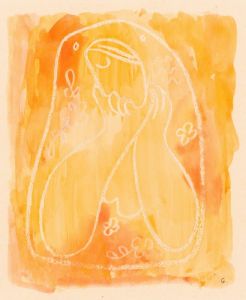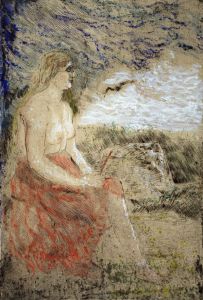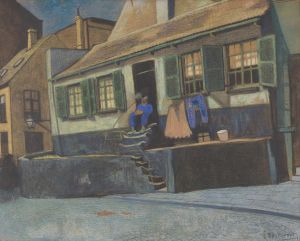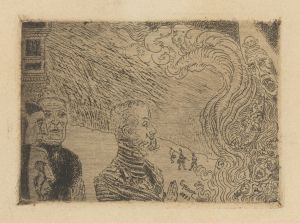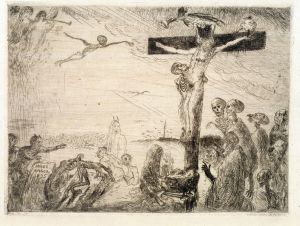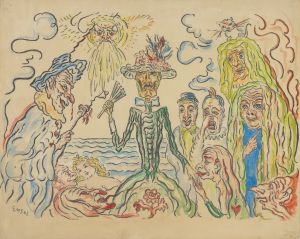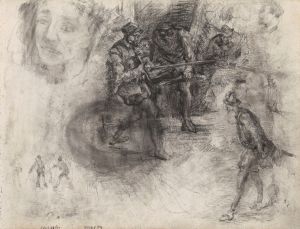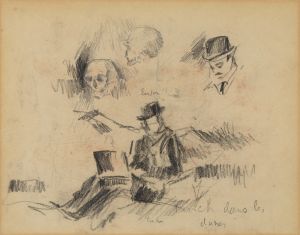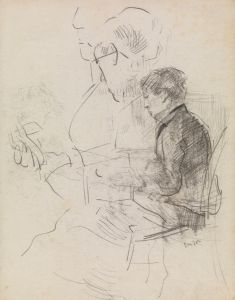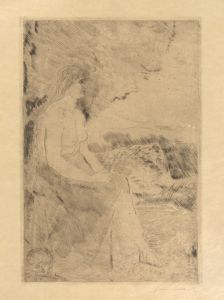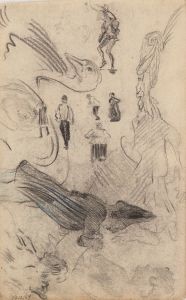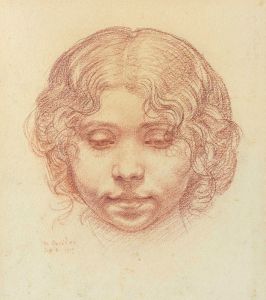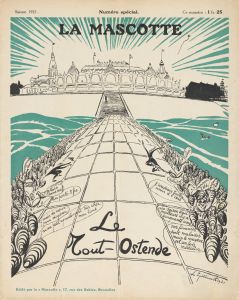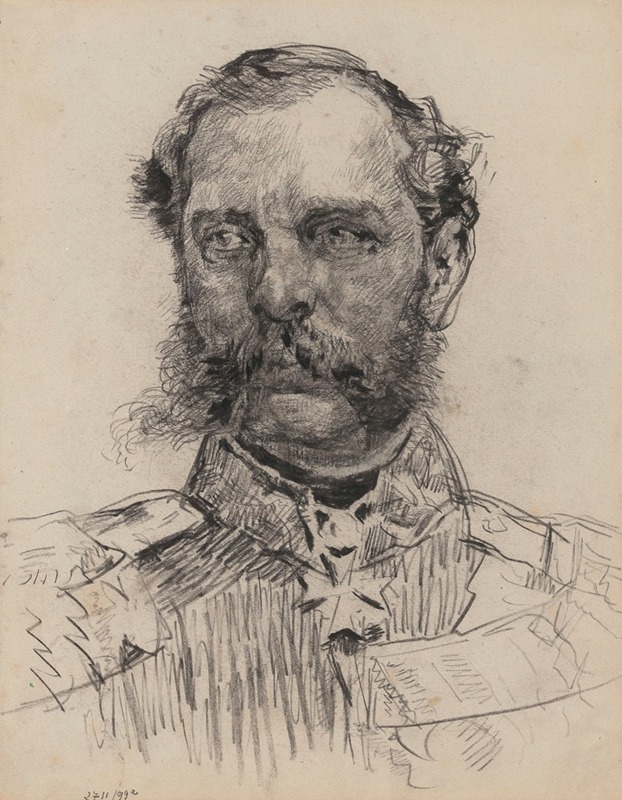
Portrait of a Man
A hand-painted replica of James Ensor’s masterpiece Portrait of a Man, meticulously crafted by professional artists to capture the true essence of the original. Each piece is created with museum-quality canvas and rare mineral pigments, carefully painted by experienced artists with delicate brushstrokes and rich, layered colors to perfectly recreate the texture of the original artwork. Unlike machine-printed reproductions, this hand-painted version brings the painting to life, infused with the artist’s emotions and skill in every stroke. Whether for personal collection or home decoration, it instantly elevates the artistic atmosphere of any space.
"Portrait of a Man" is a painting by the Belgian artist James Ensor, a prominent figure in the late 19th and early 20th-century art scene. Ensor is best known for his innovative and often provocative works that contributed significantly to the development of Expressionism and Surrealism. Born in 1860 in Ostend, Belgium, Ensor spent most of his life in his hometown, where he drew inspiration from its vibrant atmosphere and the eclectic collection of objects in his family's curiosity shop.
James Ensor's work is characterized by its bold use of color, intricate detail, and often satirical or grotesque subject matter. His paintings frequently explore themes of death, masks, and the absurdity of human existence, reflecting his fascination with the macabre and the carnival-like aspects of life. Ensor's unique style and thematic focus set him apart from many of his contemporaries and earned him a place among the pioneers of modern art.
"Portrait of a Man" exemplifies Ensor's skill in capturing the essence of his subjects through expressive brushwork and a keen eye for detail. Although specific details about the painting's creation, such as the exact date and the identity of the sitter, are not well-documented, it is believed to have been produced during a period when Ensor was deeply engaged in exploring the human condition through portraiture.
In this work, Ensor employs a vivid palette and dynamic composition to convey the personality and mood of the subject. The painting reflects Ensor's interest in the psychological depth of his sitters, a characteristic feature of his portraiture. The man's expression and posture suggest a sense of introspection or contemplation, inviting viewers to ponder the thoughts and emotions that lie beneath the surface.
Ensor's portraits, including "Portrait of a Man," often blur the line between reality and imagination, incorporating elements that challenge traditional notions of representation. This approach aligns with Ensor's broader artistic philosophy, which sought to push the boundaries of conventional art and explore new realms of visual expression.
Throughout his career, Ensor's work was met with both acclaim and controversy. While some critics praised his originality and daring, others were unsettled by his unconventional style and subject matter. Despite this, Ensor's influence on subsequent generations of artists is undeniable, and his contributions to the evolution of modern art continue to be celebrated today.
"Portrait of a Man" remains a testament to Ensor's artistic vision and his ability to capture the complexity of human experience. The painting is part of the rich legacy Ensor left behind, which continues to inspire and challenge viewers and artists alike. His work is housed in numerous prestigious collections worldwide, ensuring that his unique perspective on life and art endures for future generations to appreciate.





